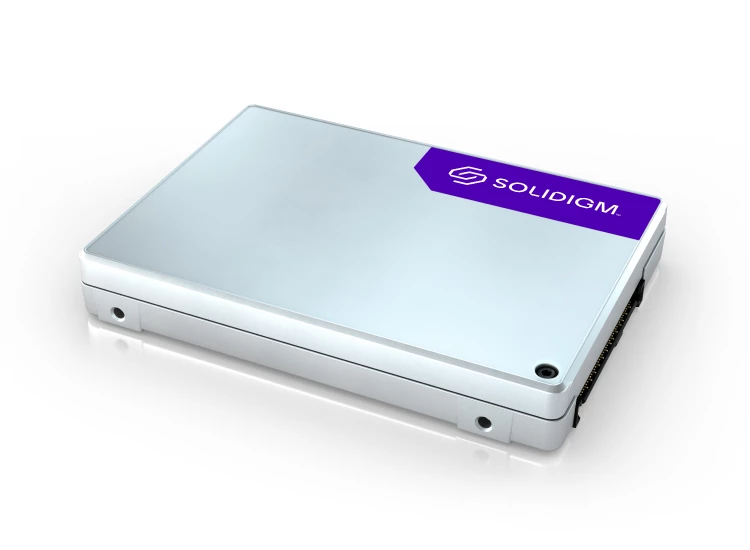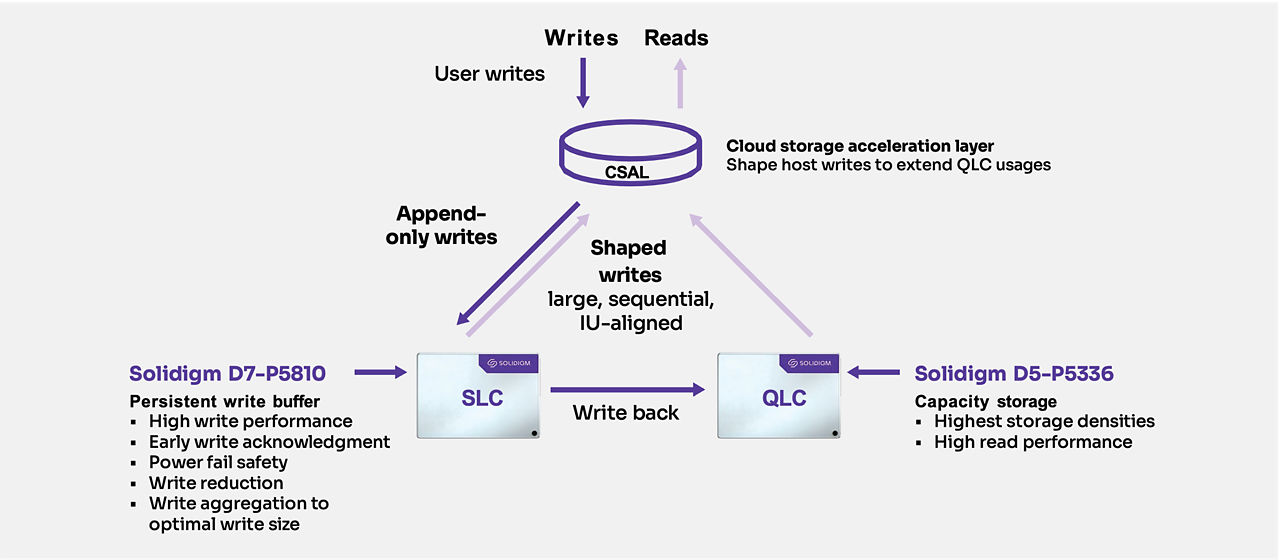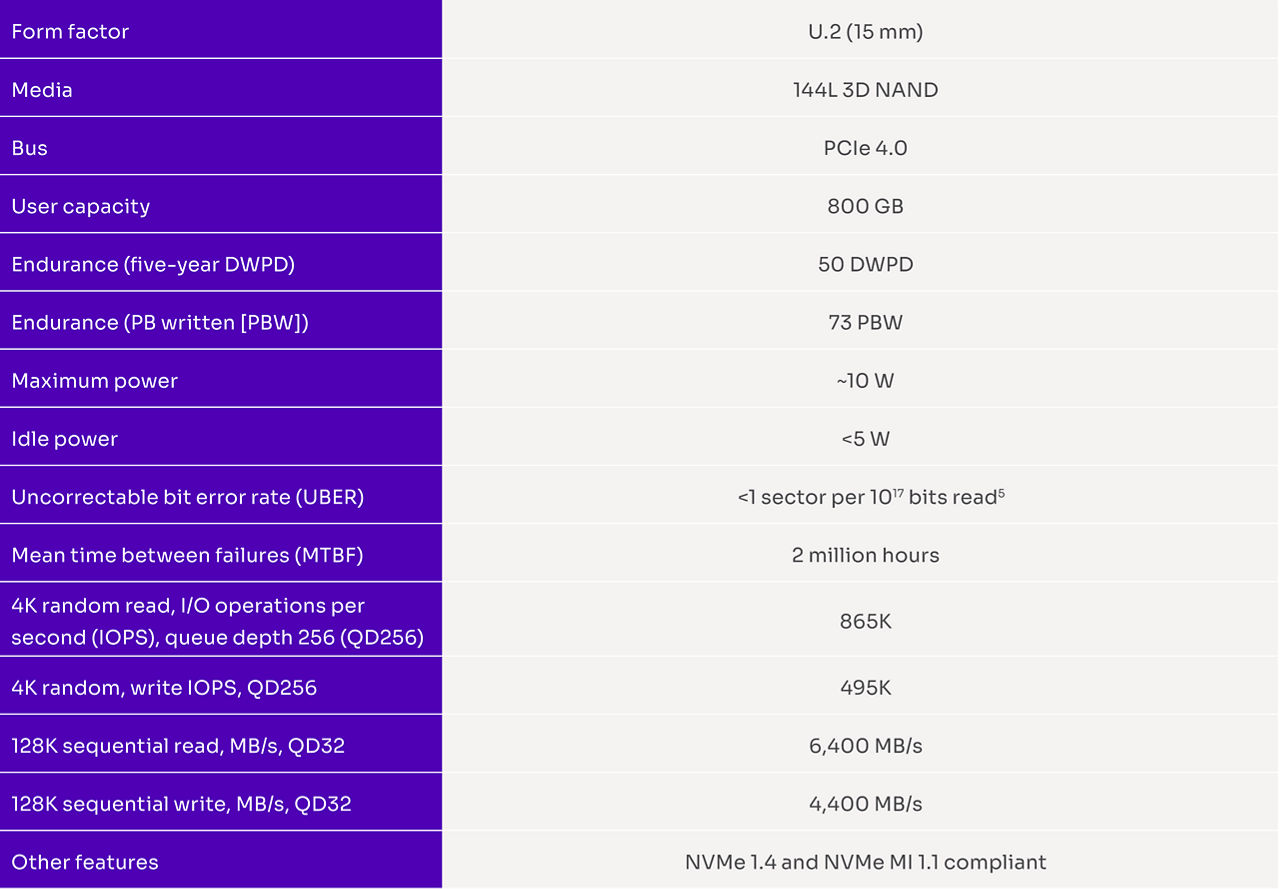Solidigm™ D7-P5810 Product Brief
High performance for extreme-write workloads with Solidigm™ D7-P5810
Data is highly valuable to organizations as they undergo digital transformation. Yet enterprises are struggling to keep up with ever-increasing dataset sizes using their current data center and cloud infrastructures. They need fast and cost-efficient storage solutions for all of their data workloads. But one SSD does not fit all usages.

Enterprises need to consider the types of workloads they are running and adjust their storage accordingly. While quad-level cell (QLC) drives are well suited for many mainstream and read-intensive workloads, such as data lakes for artificial intelligence (AI), machine learning (ML), and content-delivery networks (CDNs), the storage needs of write-intensive workloads, such as high-frequency trading, caching, and databases, are quite different. These write loads are continuous and slower than read-intensive workloads, requiring a solution that helps improve response times.
Solidigm D7-P5810 is made for extreme writes and endurance
The Solidigm D7-P5810 is a single-level cell (SLC) NVM Express (NVMe) drive that delivers what enterprises need for extremely write-heavy workloads like caching, high-performance computing (HPC), logging, and journaling, with nearly 2x better performance. [1] It also offers high random and sequential write durability at an endurance rate of up to 50 drive writes per day (DWPD) for random write workloads.
Along with high endurance and performance, the D7-P5810 operates with lower power consumption compared to storage-class memory alternatives.

Table 1. Industry-leading write performance, endurance, and power efficiency
Role as a persistent write buffer
The D7-P5810 can be used with QLC drives in a cloud storage acceleration layer (CSAL) deployment. A CSAL is an open-source software layer that uses storage-class media as a write cache to shape write workloads in all forms and sizes (large, small, random, and sequential) to NAND-friendly, large input/output (I/O) sequential writes. This can greatly improve the performance and lifetime of QLC SSDs. As shown in Figure 1, the D7-P5810 can act as the ultra-fast write buffer for a CSAL to sequentialize I/O writes to a QLC device.

Figure 1. The Solidigm D7-P5810 can be used as a persistent write buffer as part of a CSAL
Solidigm D7-P5810 key feature overview

Deploy with confidence
Solidigm believes the two basic requirements of any storage device are to always be available and to never return bad data. While no storage solution can provide an absolute guarantee that these requirements are met, Solidigm applies its decades of experience and its industry-wide deep technical engagements to relentlessly pursue these goals. It starts with design, where Solidigm adds extra checks into its power-loss protection to help ensure data is saved accurately. In addition, Solidigm delivers highly robust full data-path protection with error correction code (ECC) covering 99 percent of SRAM.
From there, the company conducts test and validation procedures that go above and beyond industry specifications and common practices such as testing for 10x and beyond UBER ratings and the JEDEC specification. This thoughtfulness pays off when considering results such as an annualized failure rate (AFR) in high-volume manufacturing that is consistently better than the company’s ≤0.44 percent goal. In addition, through testing for resistance to silent data corruption (SDC) at Los Alamos National Labs spanning five product generations and more than 6 million cumulative years of simulated drive life, Solidigm has shown zero SDC events.
Notes
[1] Measuring 4K random write IOPS performance at QD128 versus a 960 GB Micron XTR NVMe SSD. Source: Micron. “Micron® XTR NVMe™ SSD.” May 2023. https://media-www.micron.com/-/media/client/global/documents/products/product-flyer/xtr_nvme_ssd_product_brief.pdf?la=en&rev=1804383771b74425b1ad2546c6b7db20.
[2] UBER rating tested to 10x higher than the JEDEC specification. Solidigm tests to 1E–17 under a full range of conditions and cycle counts throughout the life of the drive, which is 10x higher than 1E–16 specification in the JEDEC Solid State Drive Requirements and Endurance Test Method (JESD218). Source: JEDEC. Solid State Drives webpage. Accessed September 2023. www.jedec.org/standards-documents/focus/fl sh/solid-state-drives. SDC rating modeled to 1E–25. Typical reliability demonstration tests involve 1K SSDs for 1K hours to model to 1E–18. Solidigm drives are tested at the neutron source at Los Alamos National Labs to measure SDC susceptibility to 1E–23 and modeled to 1E–25.
Current characterized errata are available on request.
Contact your Solidigm representative or your distributor to obtain the latest specifications before placing your product order.
For copies of this document, documents that are referenced within, or other Solidigm literature, please contact your Solidigm representative.
All products, computer systems, dates, and figures specified are preliminary based on current expectations, and are subject to change without notice.
© Solidigm. “Solidigm” is a trademark of SK hynix NAND Product Solutions Corp (d/b/a Solidigm). Other names and brands may be claimed as the property of others.